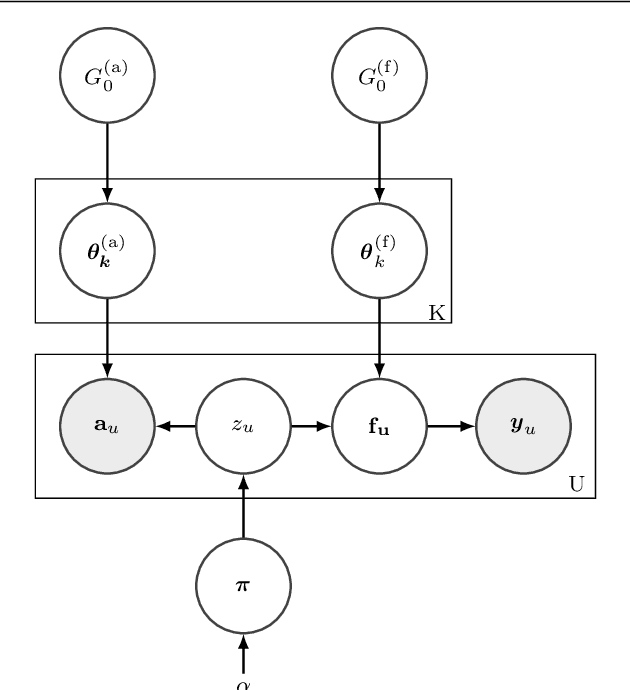Bertrand Jouve
IMT
Non-parametric clustering over user features and latent behavioral functions with dual-view mixture models
Dec 18, 2018



Abstract:We present a dual-view mixture model to cluster users based on their features and latent behavioral functions. Every component of the mixture model represents a probability density over a feature view for observed user attributes and a behavior view for latent behavioral functions that are indirectly observed through user actions or behaviors. Our task is to infer the groups of users as well as their latent behavioral functions. We also propose a non-parametric version based on a Dirichlet Process to automatically infer the number of clusters. We test the properties and performance of the model on a synthetic dataset that represents the participation of users in the threads of an online forum. Experiments show that dual-view models outperform single-view ones when one of the views lacks information.
Batch kernel SOM and related Laplacian methods for social network analysis
Jan 06, 2008



Abstract:Large graphs are natural mathematical models for describing the structure of the data in a wide variety of fields, such as web mining, social networks, information retrieval, biological networks, etc. For all these applications, automatic tools are required to get a synthetic view of the graph and to reach a good understanding of the underlying problem. In particular, discovering groups of tightly connected vertices and understanding the relations between those groups is very important in practice. This paper shows how a kernel version of the batch Self Organizing Map can be used to achieve these goals via kernels derived from the Laplacian matrix of the graph, especially when it is used in conjunction with more classical methods based on the spectral analysis of the graph. The proposed method is used to explore the structure of a medieval social network modeled through a weighted graph that has been directly built from a large corpus of agrarian contracts.
 Add to Chrome
Add to Chrome Add to Firefox
Add to Firefox Add to Edge
Add to Edge